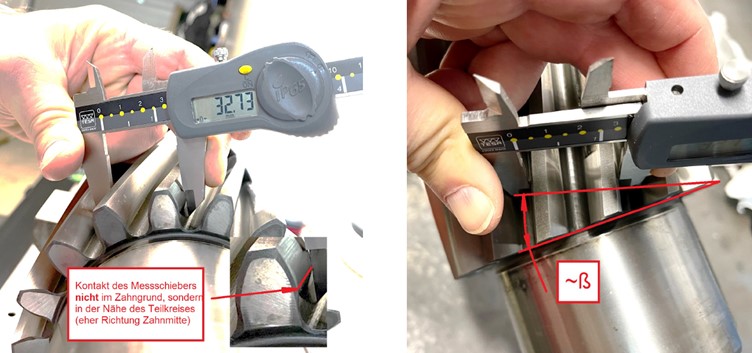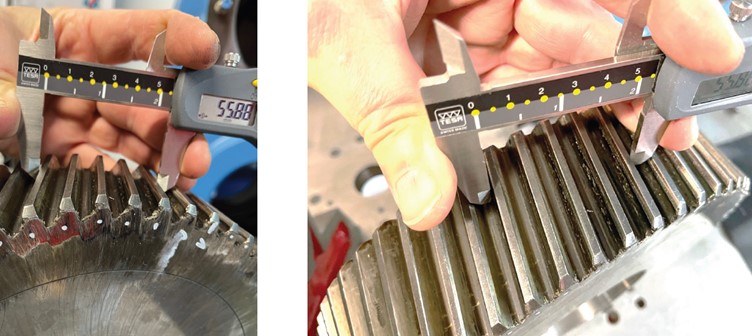Falls jedoch die Profilverschiebung nicht gegeben, also noch zu ermitteln ist, so kann über unser zweites kostenfreies Berechnungstool dieser Wert retrograd ermittelt werden. Geben Sie dafür Modul (mm), Zähnezahl (z), Schrägungswinkel (ß) und die Zahnweite (W) mit der verwendeten Meßzähnezahl (k) ein und erhalten als Ergebniswert die Profilverschiebung (x). Auch diese Berechnung, wie bei der Zahnweitenberechnung, liegt der Eingriffswinkel (alpha) mit 20° zugrunde.
If, however, the profile shift is not given and still needs to be determined, you can retroactively determine this value using our second free calculation tool. Enter the module (mm), number of teeth (z), helix angle (ß), tooth width (W), and the used measuring teeth number (k). The result will be the profile shift (x). Similar to the tooth width calculation, this calculation is based on an involute angle (alpha) of 20°.
Note: The calculated profile shift factor (x) is the value calculated based on the entered/measured tooth width. This value refers to the actual generated tooth width without tolerances and includes any wear.
Useful tips to avoid measurement errors:
Measurement errors with various causes can occur during the measurement of tooth width. Usually, tooth width measurement is done using a disk-type micrometer screw.
A caliper can be used as an makeshift alternative.
Procedure for the makeshift measurement of tooth width using a caliper.


Rights to this information are owned by Hueber Service GmbH 2022. All calculation results are provided without guarantee. Any use of the calculation results is at your own risk.
For additional information and illustrations on tooth width measurement, you can refer to: https://de.wikipedia.org/wiki/Zahnweitenmessung

